

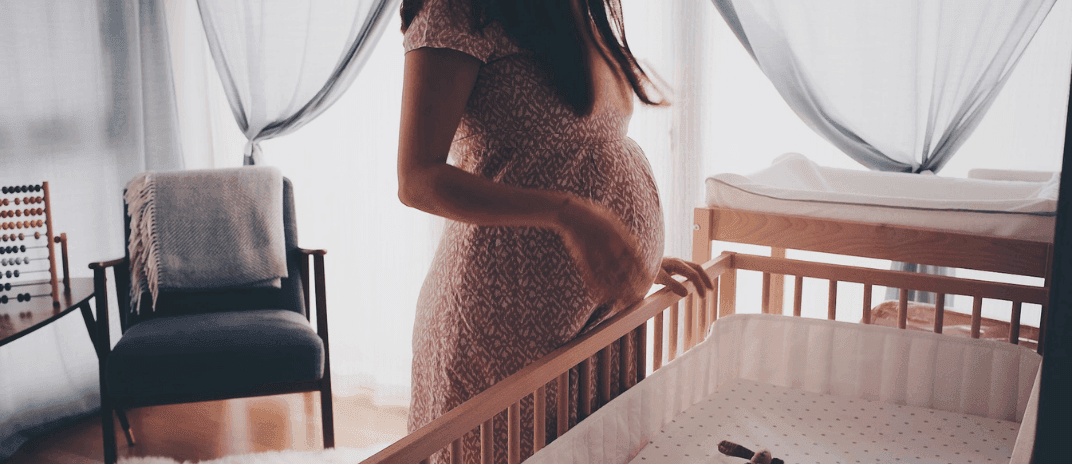
C-section is a delivery method that some pregnant women may have to go through when vaginal delivery is not an option. It is a major operation that causes a lot of pain and discomfort postpartum, affecting sleep quality. As such, it’s important for expecting mums to know how to sleep after a C-section in the likelihood that they have to go through the process.
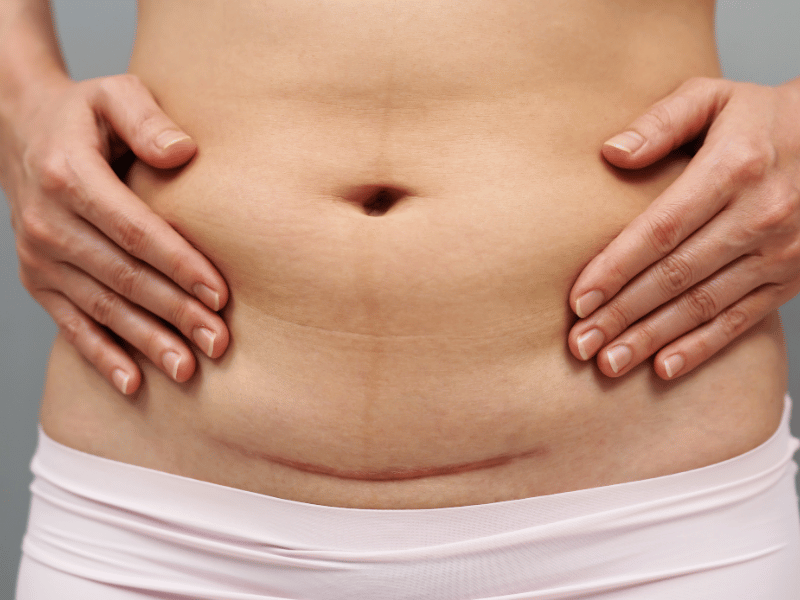
When it comes to giving birth, there are two kinds of delivery methods — vaginal birth and cesarean section.
Cesarean section (C-section), or cesarean delivery makes up about 32.1% of deliveries in the United States [1]. That is approximately one-third of pregnant women who go through it.
A C-section is a major surgery in which delivery of the baby is done through the stomach when it is not possible for vaginal delivery [2]. It is said that a full cesarean section recovery can take anywhere between 4 to 6 weeks. However, this is also dependent on the individual and how well the wound is taken care of. Some may recover much faster while some may still experience pain and discomfort 24 weeks postpartum [3].
During this period, it’s essential to avoid strenuous activities and get enough sleep for proper recovery.
The postpartum period is a significant time of transformation and adjustment. The physical strain and shifts in your hormones, and emotional and mental health, make it important for you to get enough sleep so that you can heal your body.
Getting adequate sleep can help your body repair tissues, reduce pain, and promote wound healing for a faster healing process. When sleep is compromised, it can lead to a weaker immune system, discomfort, and a slower recovery [4].
While recovering from a C-section, it can be challenging to get a good night’s sleep due to pain, discomfort, or hormonal changes. Here are some tips to help you fall asleep after a C-section.
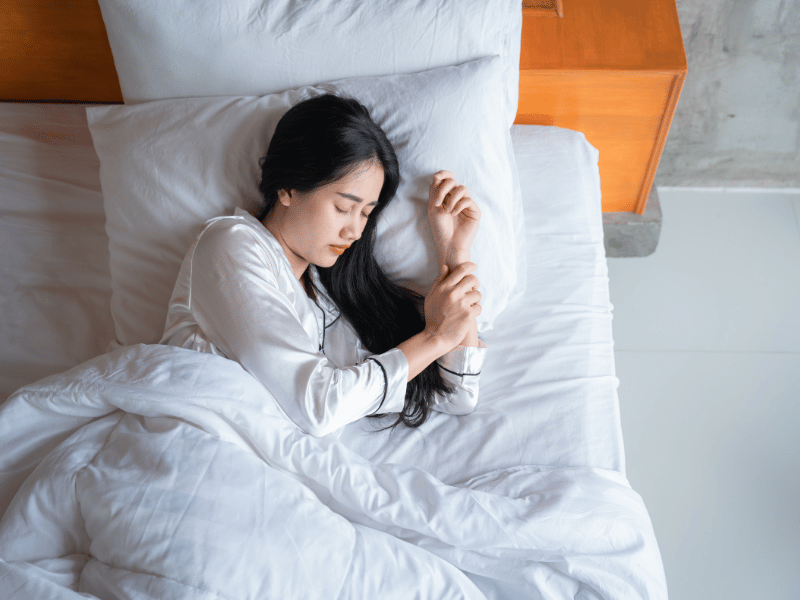
During recovery, you want to avoid putting pressure on the incision area as it may result in a longer healing time. Thus, it is important to find a safe sleeping position that is comfortable for you and also reduces pressure.
The best position to sleep in after a C-section includes:
One position that you want to avoid sleeping in would be sleeping on your stomach as this can put pressure on your incision and lead to discomfort.
After delivery, your wound will be covered with a dressing for up to 24 hours. For the following weeks after, you’ll be advised by your doctor to wear loose, comfortable clothes and cotton underwear and to clean and dry the wound well every day [5].
You should also look out for any signs of wound infection or stitch separation during this time. Pus oozing from the incision, bad-smelling vaginal discharge, heavy vaginal bleeding, and a red and swollen wound are all indications of an infected C-section scar.
If the stitches are non-dissolvable, you would be advised by your doctor to return for removal after 5 to 7 days.
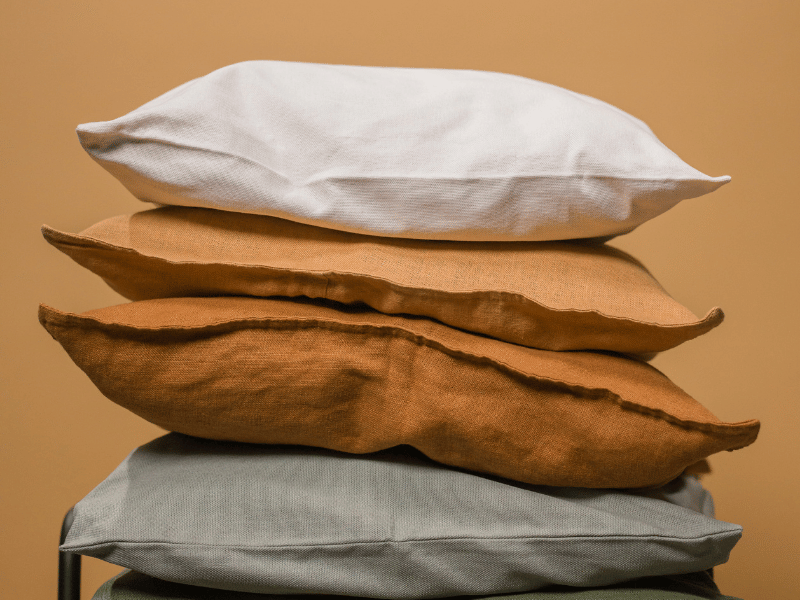
Using a pillow helps to support your abdomen and keep you in a comfortable position. It may also help to prevent unnecessary strain. You may use a pillow in different ways, either having it as a support for your back, lying with a pillow under your knees, or placing it between the knees.
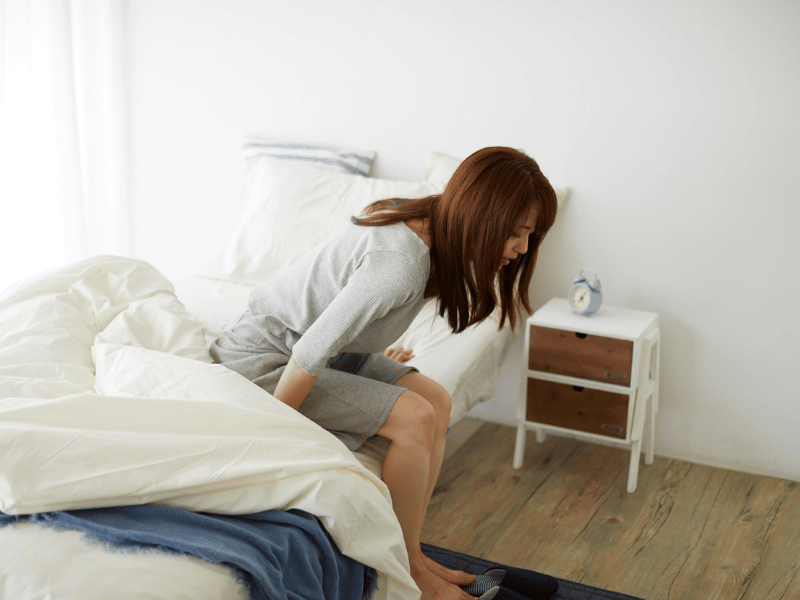
When you are trying to get out of bed, it’s important to be extra careful and ensure that you are doing it safely to avoid straining your core. One method is to use a sturdy chair or a bedside table for support when you are getting up.
Alternatively, you may use the log roll method to help you get out of bed. Start by having your knees bent and roll towards the side with your shoulders and knees close together. Then, push yourself off the bed using your hands or elbows while swinging your legs off the bed until you are in a sitting position. This method helps you to avoid straining your abdominal muscles too much [6].
It’s also important for you to stay well-hydrated and consume a highly nutritious diet. You need the essential vitamins and minerals for proper healing. A proper diet should consist of lean proteins, whole grains, fruits, vegetables, and healthy fats.
Your doctor may prescribe pain medications for you to take so that you can manage the postoperative pain and minimize discomfort. Additionally, you may consider the use of a heating pad or warm compress to further relieve the discomfort.
Last but not least, creating a soothing sleep environment can help facilitate better sleep during this time. You can do so by dimming the lights, minimizing noise, and ensuring that your room is at set at a comfortable room temperature.
Consider using sleep accessories such as a sleep mask, or white noise machine to help block out external noises for a peaceful rest. You may also invest in a comfortable mattress or pillow to support your body while resting.
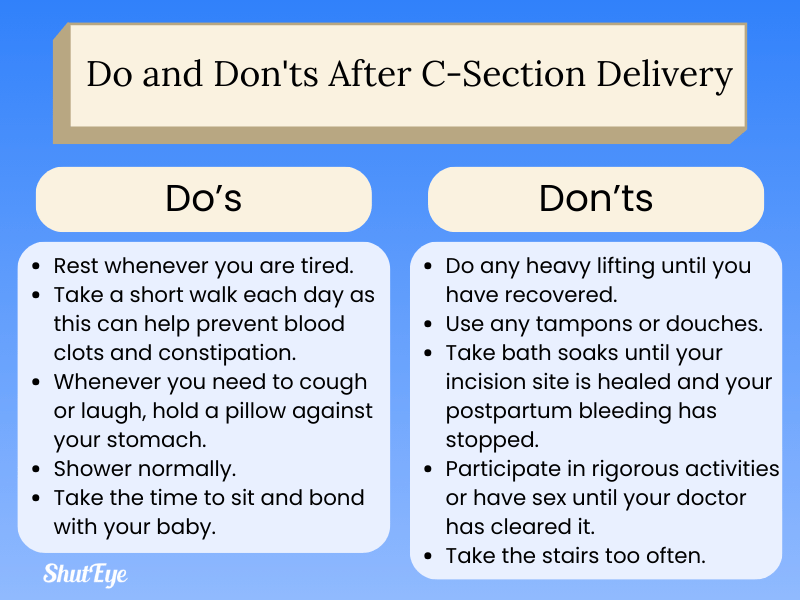
Here are also some do’s and don’ts that you should be aware of after delivery, as your body starts to heal:
During recovery, it’s normal for you to feel overwhelmed or anxious, especially in the early days. Some ways to combat this would be to practice relaxation techniques such as deep breathing or guided meditation exercises to calm your mind down.
You may also consider speaking to a therapist or counselor to address any concerns that you might have or if it starts to take a toll on you physically and mentally.
Recovering from a c-section requires a lot of patience, self-care and proper sleep. Since sleep is essential for healing, new mothers should make it a priority to optimize their sleep quality and find a comfortable sleeping position.
If you’re looking for a way to help you improve your sleep quality, try out the ShutEye® app. ShutEye not only helps to analyze your sleep patterns but also offers personalized recommendations to help you get better sleep. Try for FREE today!
Chicago Family Therapy Center (2025) The Importance of Sleep During Postpartum: A Vital Component for Recovery and Well-being [online]. Available at: https://chicagofamilytherapy.com/the-importance-of-sleep-during-postpartum-a-vital-component-for-recovery-and-well-being/
Health Hub (2021) Cesarean section delivery [online]. Available at: https://www.healthhub.sg/live-healthy/pregnancy-cesarean-section-delivery
National Center for Health Statistics (2024) Births – Method of Delivery [online]. Available at: https://www.cdc.gov/nchs/fastats/delivery.htm
Villines, Z. (2023) How to speed up recovery from a cesarean delivery [online]. Available at: https://www.medicalnewstoday.com/articles/323229
Zarbafian, Y., and McLaughlin, J., (2024) C-SECTION CARE HANDOUT [online]. Available at: https://www.aptapelvichealth.org/file/secure/How-to-Take-Care-of-Your-Cesarean-Scar.pdf